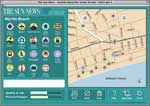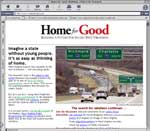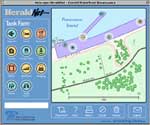Growth on the Strand, Myrtle Beach, SC 2001
Partners:
The Sun News
Myrtlebeachonline.com
Coastal Carolina University
With Myrtle Beach becoming the fastest-growing relocation destination in the nation, the paper gave residents a chance to try their hand at managing growth in the region with an interactive Web-based game, similar to the model pioneered by The Herald in Everett.
“Chart the Strand’s Future,” a feature introduced on the paper’s Web site in April 2002, allowed users to drop icons onto a map in order to design a growth plan, as in the popular game “Sim City.” The paper did not, however, collect and analyze the designs, as the The Herald in Everett, WA, did. Rather, the game was an end in itself, designed to give users a taste of the trade-offs and challenges city planners face when managing growth. The game included a meter by which users could see how each choice for development affected both the community’s financial health and quality of life. The paper received informal, positive feedback but could not keep track of how many people participated.
Read more
 Water. The Power. The Profit. Savannah, GA 2002
Water. The Power. The Profit. Savannah, GA 2002 






